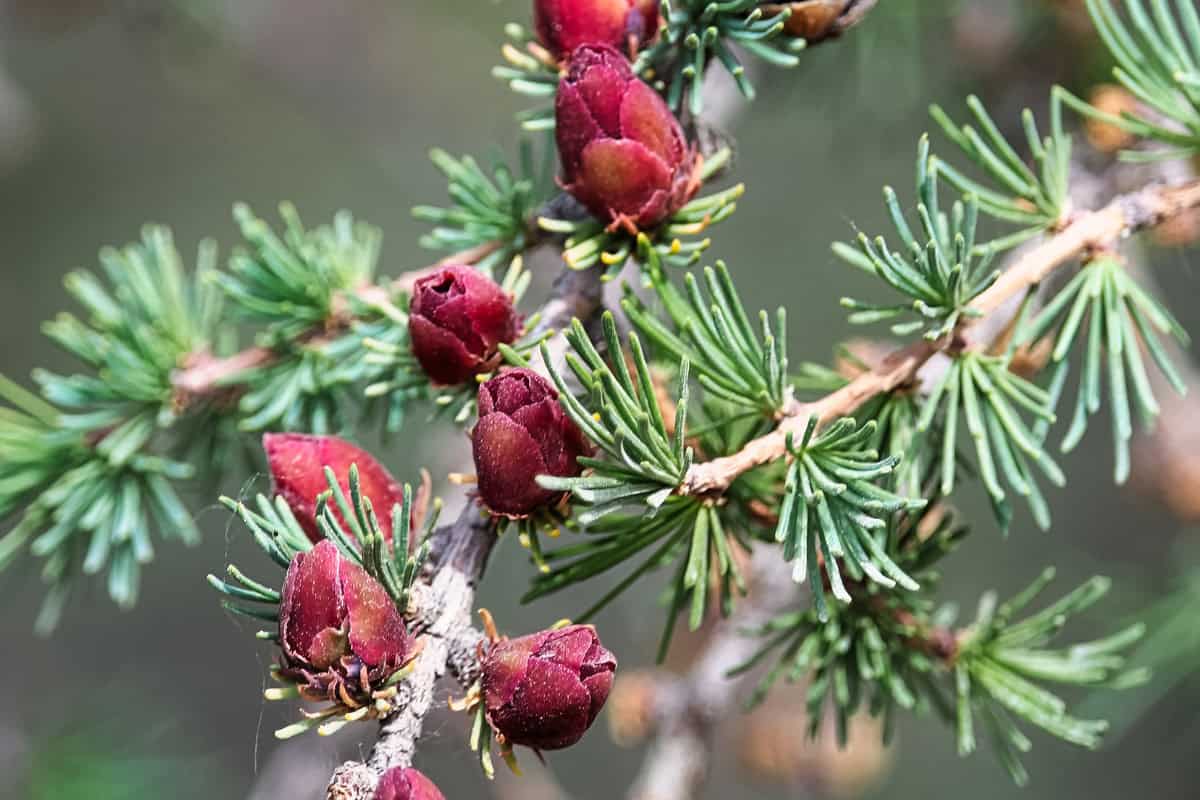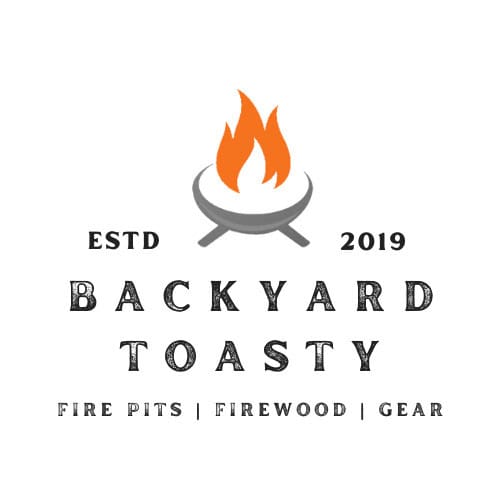
This comprehensive Tamarack firewood profile explores the exceptional softwood that burns like a hardwood, delivering 20,000-21,800 BTUs per cord with remarkable density and surprising performance characteristics.
Known as the deciduous conifer that defies expectations, Tamarack offers outstanding heat output and burning qualities that rival many hardwoods while maintaining the processing ease of softwood species.
Quick Reference Stats: Tamarack Firewood Profile
- Wood Type: Softwood (deciduous conifer)
- BTU Rating: 20,000-21,800 BTUs per cord
- Ease of Splitting: Easy to Moderate (4/5 scale)
- Seasoning Time: 6-12 months
- Smoke Production: Low to Moderate
- Spark/Pop Factor: Moderate
- Scent Profile: Pleasant – Fresh, slightly sweet coniferous aroma
Overview & Identification
Tamarack represents the ultimate softwood paradox – a coniferous tree that loses its needles each fall yet burns with the intensity of quality hardwood. This unique deciduous conifer provides exceptional heat output that surprises those expecting typical softwood performance.
This comprehensive Tamarack firewood profile reveals why the distinctive golden fall color and straight-grained wood make identification straightforward for this northern forest champion.
Common Names: Tamarack, Eastern Larch, American Larch, Hackmatack
Scientific Name: Larix laricina (family Pinaceae)
Tree Characteristics: Medium-sized deciduous conifer reaching 50-80 feet with straight trunk and narrow pyramidal crown. Features soft, bright green needles in clusters that turn brilliant gold before dropping in fall. Unique among conifers for losing needles annually.
Geographic Distribution
Where You’ll Find It: Northern United States and Canada from Alaska to Newfoundland, south to northern Minnesota, Wisconsin, and Maine
Availability: Moderate to good in northern regions – often available from logging operations and land clearing
Growing Conditions: Thrives in cold climates and wet soils including bogs and swamps. Pioneer species often found in pure stands.
Burning Characteristics
Heat Output & Performance
- BTU Content: Exceptional for a softwood – rivals many medium-grade hardwoods in heat production
- Burn Duration: Burns longer than typical softwoods with good sustained heat output
- Coaling Properties: Forms better coals than most softwoods though not matching premium hardwoods
- Flame Characteristics: Burns with bright, active flames transitioning to moderate coal bed
Ignition & Fire Management
- Ease of Lighting: Ignites readily like most conifers – excellent for starting fires
- Best Fire Stage: Versatile fuel suitable for both starting and maintaining fires
- Burn Rate: Moderate consumption rate – faster than hardwoods but slower than typical softwoods
- Heat Consistency: Good steady heat with more reliability than standard softwoods
Sensory Experience
Smoke Profile
- Smoke Volume: Low to moderate smoke production when properly seasoned
- Smoke Color: Clean burning with light smoke when dry
- Smoke Flavor: Mild coniferous flavor suitable for some cooking applications
- Creosote Production: Moderate – lower than most softwoods due to density
Sound & Visual
- Crackling/Popping: Moderate crackling with occasional pops – typical conifer behavior
- Sparking Tendency: Moderate sparking requires screen use for safety
- Flame Appearance: Bright, lively flames with good visual appeal
Aroma
- Burning Scent: Pleasant fresh coniferous fragrance with subtle sweetness
- Pleasant Factor: Generally well-received aroma that’s not overpowering
- Intensity: Moderate aromatic presence that adds ambiance without dominating
Processing & Preparation
Splitting Characteristics
- Ease of Splitting: Easy to moderate – straight grain facilitates clean splitting
- Grain Pattern: Typically straight, tight grain with minimal knots in quality logs
- Tools Needed: Maul or standard axe sufficient for most pieces
- Best Splitting Conditions: Splits well green or seasoned – winter splitting ideal
Seasoning Requirements
- Drying Time: 6-12 months – faster than hardwoods due to lower initial moisture
- Moisture Content: Reaches optimal burning moisture relatively quickly
- Seasoning Tips: Stack loosely for air circulation – benefits from covered storage
- Storage Considerations: Protects well from weather – resin content provides some resistance
Processing Notes
- Chainsaw Considerations: Cuts easily with minimal chain wear – resin can build up
- Bark Characteristics: Scaly bark that’s easily removed when processing
- Handling: Moderate weight – heavier than typical softwoods but manageable
- Safety Considerations: Resin pockets can cause unexpected sparking
Specialized Uses
Unique Applications
- Shoulder Season Fuel: Excellent for fall and spring heating needs
- Campfire Wood: Popular for outdoor fires due to pleasant aroma and good heat
- Starting Fires: Superior kindling and early-stage fuel compared to most softwoods
- Mixed Wood Strategy: Excellent when mixed with hardwoods for balanced burning
Traditional Applications
- Northern Heritage: Traditional heating fuel in boreal regions
- Construction History: Historically used for ship knees and railroad ties
- Indigenous Uses: Various traditional uses including medicinal applications
- Craft Applications: Straight grain suitable for some woodworking projects
Pros & Cons
Advantages
- Highest BTU output among commonly available softwoods
- Burns longer and hotter than typical conifers
- Seasons quickly compared to hardwoods
- Easy to split with straight grain
- Pleasant, not overwhelming aroma
- Excellent for starting fires
- Good shoulder season wood
- Readily available in northern regions
- Unique deciduous conifer adds interest
- Better coaling than most softwoods
Disadvantages
- Still burns faster than premium hardwoods
- Moderate sparking requires caution
- Limited availability outside northern regions
- Produces more ash than premium hardwoods
- Resin content can build up in chimneys
- Not ideal for overnight burns
- May not satisfy hardwood purists
- Seasonal needle drop can be messy
- Moderate creosote production
- Lower density than true hardwoods
Best Practices & Tips
Optimal Usage Strategy
- Mixed Burns: Combine with hardwoods for balanced performance
- Shoulder Seasons: Primary fuel for spring and fall heating
- Fire Starting: Use split pieces for excellent kindling
- Daytime Burns: Ideal for maintaining fires during active use
Processing Efficiency
- Timing: Process in late fall or winter for best splitting
- Size Management: Split to consistent sizes for even burning
- Bark Removal: Consider removing bark to reduce mess
- Stacking: Stack with good airflow for rapid seasoning
Burning Techniques
- Fire Management: Add pieces more frequently than hardwood
- Screen Use: Always use spark screen for safety
- Mixing Strategy: Layer with hardwoods for extended burns
- Ash Management: Clean ash pan more frequently than with hardwoods
Bottom Line
Tamarack stands out as the exceptional softwood that challenges preconceptions about coniferous firewood.
While it can’t match the burn time of premium hardwoods, its impressive heat output, reasonable seasoning time, and pleasant burning characteristics make it an excellent choice for those in northern regions seeking quality firewood with easier processing than dense hardwoods.
This Tamarack firewood profile demonstrates why it’s become the go-to choice for discerning users who want the best of both worlds – softwood convenience with near-hardwood performance.
Best For: Northern climate users, shoulder season heating, fire starting, mixed wood strategies, and those seeking high-performance softwood
Skip If: You need long overnight burns, live outside its range, require premium hardwood performance, or have strong preferences against softwoods
For those ready to discover the softwood that defies all expectations, this comprehensive reference table showcases Tamarack’s remarkable characteristics at a glance.
Perfect for comparing against both traditional softwoods and hardwoods, or sharing with fellow northern climate enthusiasts who appreciate superior performance.
Related Resources: Tamarack Firewood Profile
Last updated: 8/13/2025


